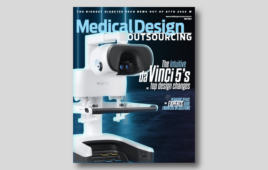Ilene Busch-Vishniac has a real problem with hospital alarms. The renowned acoustics expert considers alarm failure to be one of the top medical technology hazards in the U.S.
Busch-Vishniac, who presented her findings this month during the Acoustical Society of America’s Spring 2016 Meeting in Salt Lake City, built a model that predicts how often alarm errors will occur.
Alarm failures result in 200 alarm-related deaths per year and more than 500 adverse events annually. But the situation is actually much worse than the numbers show, she told attendees.
The challenge, she said, is human nature. Busch-Vishniac is concerned that the levels of adverse reporting are far too low because they only represent a “fraction” of negative events. That is to say, they don’t include non-events.
Consider it this way: On any given day in the U.S., there are about 480,000 patients in hospital, each generating an average of 135 clinical alarms that day. Studies show that more than 90% of these alarms result in no action. Of the estimated 67 million alarms that go off every day in U.S. hospitals, only a fraction indicate patients in need of urgent care. Not considered false alarms, these could be low battery warnings or a thousand other warnings manufacturers introduced to ensure safe use of their devices. Taken one at a time, these notifications are well-meaning, well-designed parts of the product. But as members in the orchestra of hospital care, amid hundreds of other devices, they create cacophony instead of symphony.
Hospital alarms have long been a focus of study; many have concluded that clinical alarms are inefficient and ineffective tools for medical emergencies. Much attention, said Busch-Vishniac, has been dedicated to alarm design, with the general goal of improving response to ensure no medical emergency is missed. And although this work is vitally important to the operation of the modern hospital, she said, it focuses on minor changes to the existing systems rather than on designing the optimum system.
Busch-Vishniac’s goal is to design a more effective and efficient alarm system for hospitals in roughly 20 years. It’s a long-term strategy because the systems thinking for alarms needs a re-start, she said.
Alarm reboot
To reboot alarm thinking, Busch-Vishniac, says researchers should start from the beginning. Her model is designed to break alarms failure down to its elements. In essence, alarms fail in two ways: Either they sound and receive no response, or they fail to sound when they should.
The error model Busch-Vishniac developed is rudimentary, but it enables observers to estimate the rate of error along with the rate of alarm.
“In each case, alarms reflect a medically urgent situation or they don’t,” she explained. “For each situation, the response is either appropriate or inappropriate. This means there are eight possible scenarios associated with alarms.”
“Alarms often don’t serve the purpose for which they’re intended: To alert medical staff to urgent situations. Instead, alarms go off all the time and rarely indicate truly urgent situations. And while the focus has been on ensuring that the hospital staff responds to all alarms, studies show that it’s more common for alarm errors to occur because alarms that should sound fail to do so. This means that responding to all alarms won’t eliminate most alarm errors.”
Further, alarms themselves might have a negative impact of patient recovery, because they serve as a source of stress and commonly interrupt sleep, although Busch-Vishniac said research into disrupting outcomes is still very early and inconclusive.
“Our work suggests that it’s time to rethink alarm strategies entirely – with a goal of reducing the number of alarms to those that truly reflect urgent situations, while balancing the need to alert staff with the need to establish quieter hospital environments,” she said.
Now that Busch-Vishniac has a working model for error, her next task is to compare “medical outcomes of patients when alarms sound within their area, versus when alarms are intentionally muted and sent to staff via pagers or cell phones,” she said. “This will help to establish whether alarms potentially harm patients, as well as save lives. We’ll also explore when alarms should sound, which sounds should be used, and ways to make alarm systems more intelligent by combining information from multiple medical devices.
“Our research says there’s something wrong with this system and it needs to be changed. We now know there’s a real problem. We’ve characterized the problem, now our next step will be to improve the system and decrease the number of alarms that go off without decreasing patient safety,” Busch-Vishniac said.




![A photo of the Medtronic GI Genius ColonPro polyp detection system flagging a potential sign of colon cancer during a colonoscopy. [Photo courtesy of Medtronic]](https://www.medicaldesignandoutsourcing.com/wp-content/uploads/2024/04/Medtronic-GI-Genius-doctors-268x170.jpg)